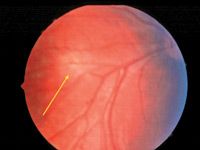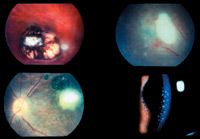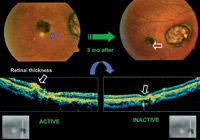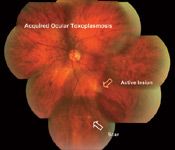Article
Ocular toxoplasmosis: Little is known, much less is true
Many previous beliefs about ocular toxoplasmosis are proving not to be true.

Key Points

According to Rubens Belfort, MD, PhD, MBA, the contrary is true, i.e., most cases are acquired. Dr. Belfort provided up-to-date information about the disease at the Current Concepts in Ophthalmology meeting, Baltimore.
Transmission

He and his colleagues have studied more than 500 families with more than one sibling with ocular toxoplasmosis.
"It is highly improbable that one mother would give birth to five or six children with congenital toxoplasmosis. We now have a great deal of evidence that indicates most cases were acquired after birth and they were not congenitally acquired," he said.

"That also is not true. There is no good scientific evidence that beef is the source of transmission of toxoplasmosis. Undercooked lamb, pork, and chicken are the culprits in most cases, as well as the environment that is contaminated by the feces of infected cats," Dr. Belfort said. "Recently, water and air have been shown to be associated with some cases of transmission of ocular toxoplasmosis, with water responsible in many cases," he added. Other possible sources of the infection include organ transplantation and blood transfusion.

An examination of 408 patients infected in that outbreak showed that 10.2% of the patients developed ocular lesions during the acute stage of the infection.
The reason ocular toxoplasmosis is seen infrequently in acquired disease is that in 95% of cases, atypical self-limited and benign lesions-including retinal whitening, retinal vasculitis, anterior uveitis, and vitreous opacities-develop. Only in 4.4% of cases does typical necrotizing retinochoroiditis develop, according to Dr. Belfort.
Newsletter
Don’t miss out—get Ophthalmology Times updates on the latest clinical advancements and expert interviews, straight to your inbox.




